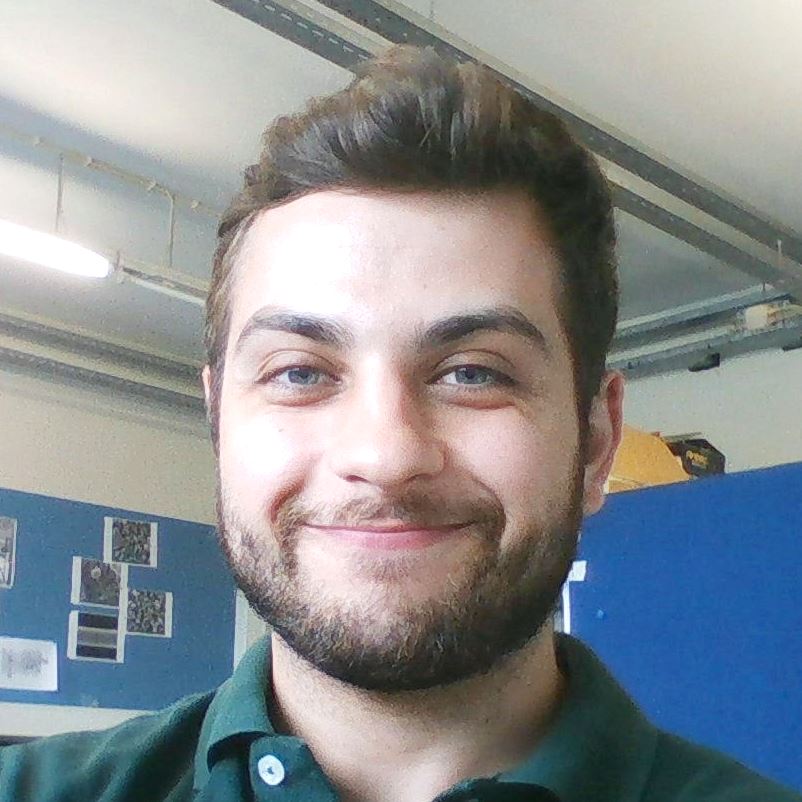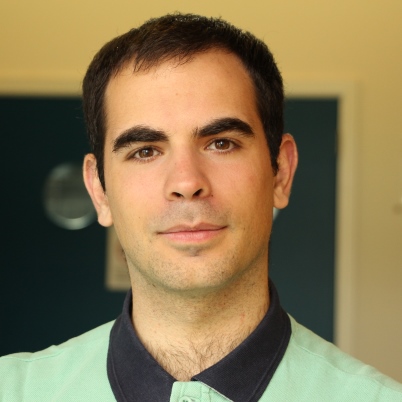 Early Stage Researcher
Early Stage ResearcherTrinity College Dublin (Ireland)
Project 4: Probabilistic optimization of the design of offshore wind turbine towers
Research Interests:
Marine renewable energy; Fluid mechanics; Offshore platforms and structures; Structural reliability analysis; Numerical modelling; Mooring systems
Biography:
Rui Teixeira holds both a BSc and MSc degree in Mechanical Engineering from the University of Porto. In the past three years he worked at INEGI, a research institute born in the Faculty of Engineering (FEUP), where he participated in several projects that involved competencies in the maritime engineering field ranging from the value chain characterization to the numerical modelling. A substantial focus of its activity during this time was on marine renewable energy (MRE) with special emphasis in the numerical modelling of MRE harnessing devices. Examples are the numerical analysis of MRE floating platforms and support to the installation, the dynamic and structural improvement, and investigation of low power MRE integration for a new concept of monitoring buoy.
In September 2015, he joined TRUSS ITN where he is working in the probabilistic analysis of offshore wind turbine towers. A summary of his research highlights and training, dissemination and outreach activities in TRUSS other than network-wide events, is provided in the pdf below, followed by more detailed info on his research outputs.
Research Outputs:
- Teixeira R., Ferreira J.P. , Morais T. and Correia N. (2015), “Wave dynamics of new spar GRP buoy concept to measure offshore wind in deep waters”, in Proceedings of 3rd edition EWEA’s technology workshop on wind Resource Assessment, Helsinki, Finland. -> External link to full text
- da Rocha B., Teixeira R., Morais T. and Sarmento A. (2014), “Observatório tecnológico para as energias offshore, Uma descrição do Projeto OTEO”, CLME, Moçambique.
Dealing with extreme events implies working with events that have low probability of occurrence. To characterize these, the peak-over-threshold method alongside the generalized Pareto distribution is commonly applied. However, when it comes to significant wave heights, this approach is not recommended. Here, the generalized Pareto distribution is discussed based on data collected around the coast of Ireland. A careful choice of threshold takes place, and a new methodology to establish the threshold level is introduced. Five indicators to evaluate the fitting are considered to compare the different statistical models. No evidence was identified to justify the rejection of the generalized Pareto distribution to model exceedances. Results show that it may be statistically less, equally or more adequate, depending on the peak-over-threshold implementation. Nevertheless, the generalized Pareto bounded character is of elementary interest for wave statistics. In some circumstances not considering it might lead to unrealistic significant wave return levels. [DOI]
Conference contributions
There is multitude of models available to assess structural safety based on a set of input parameters. As the degree of complexity of the models increases, the uncertainty of their output tends to decrease. However, more complex models typically require more input parameters, which may contain a higher degree of uncertainty. Therefore, it becomes necessary to find the balance that, for a particular scenario, will reduce the overall uncertainty (model + parameters) in structural safety. The latter is the objective of the Marie Skłodowska-Curie Innovative Training Network titled TRUSS (Training in Reducing Uncertainty in Structural Safety) funded by the EU Horizon 2020 research and innovation programme (http://trussitn.eu). This paper describes how TRUSS addresses uncertainty in: (a) structural reliability of materials such as basalt fiber reinforced polymer, (b) testing techniques in the assessment of concrete strength in buildings, (c) numerical methods in computing the non-linear response of submerged nuclear components subjected to an earthquake, (d) estimation of life of wind turbines, (e) the optimal inspection times and management strategies for ships, (f) characterization of the dynamic response of ship unloaders and (g) the relationship between vehicles fuel consumption and pavement condition.-> Link to full text in repository
The probabilistic analysis of Offshore Wind Turbines (OWT) is not a new practice. The standards for designing OWT (IEC 61400 class) emphasizes that assessing uncertainty is of major importance inside the design chain. Still, major challenges related to the uncertainty and the probabilistic assessment pose to the sector and its development. The analysis of operational loads is one them. The problem of analyzing extreme responses or cumulated damage in operation during the design phase is significantly related to its high computational cost. As we progressively add complexity to the system to account for its uncertainties, the computational effort increases and a perceptive design becomes a heavy task. If an optimization process is then sought, the designing effort grows even further. In the particular case of fatigue analysis, it is frequent to not be able to cover a full lifetime of simulations due to computational cost restrictions. The mentioned difficulties fomented the utilization of surrogate models in the reliability analysis of OWT. From these surrogate approximations the ones based on Kriging models gained a special emphasis recently for structural reliability. It was shown that, for several applications, these models can be efficient and accurate to approximate the response of the system or the limit state surfaces. The presented paper tackles some of the issues related to their applicability to OWT, in a case specific scenario of the tower component subjected to operational fatigue loads. A methodology to assess the reliability of the tower component to fatigue damage is presented. This methodology combines a Kriging model with the theory of extreme values. A one-dimensional Kriging case using the state of art NREL’s monopile turbine is presented. The reliability of the OWT tower is calculated for 20 years. The results show that the usage of a Kriging model to calculate the long term damage variation shows a high potential to assess the reliability of OWT towers to fatigue failure. -> Link to full text in repository

















